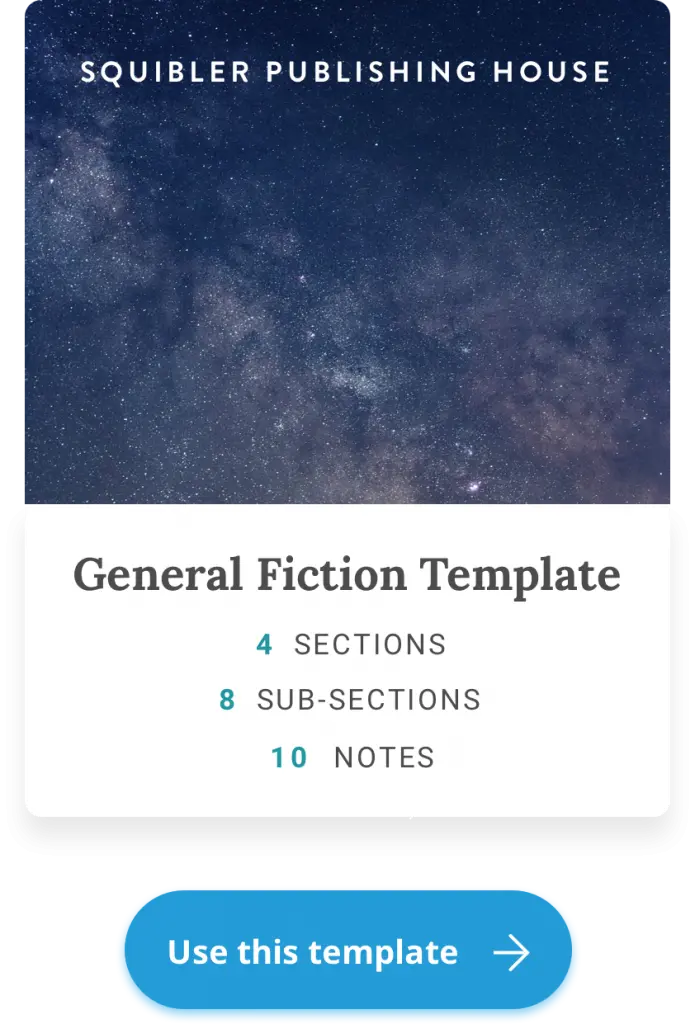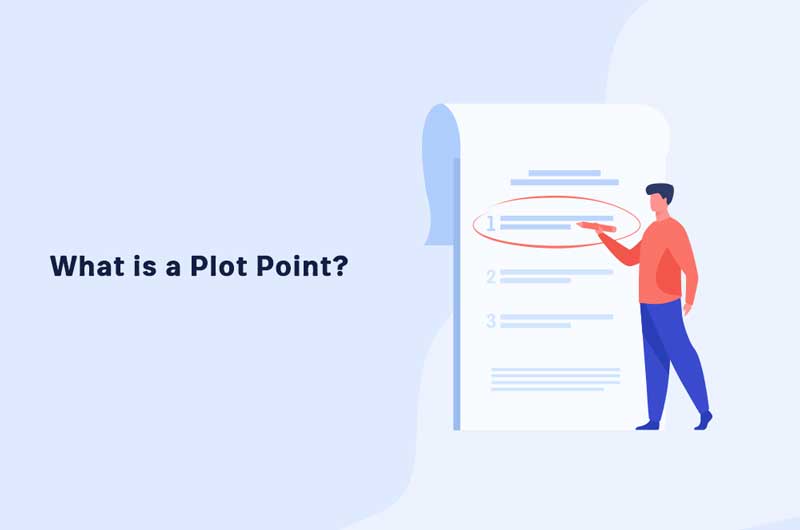Are you intrigued by the mysterious process of writing, where authors often labor over blank pages only to discard them in frustration? The secret might lie in the art of outlining a novel.
While some writers balk at the idea of meticulous planning, outlining is a crucial step in crafting a compelling story. Whether you’re a seasoned writer or just starting, mastering the art of outlining can significantly enhance your storytelling process.
As Zadie Smith suggests, understanding your approach to planning – whether you’re a meticulous micro-planner or a laissez-faire creator – is key to shaping your narrative. So, before diving headfirst into your next writing endeavor, consider the immense value of outlining your novel. In this article, we’ll explore the steps to outline a novel.
Steps to Outline a Novel
Creating a novel outline involves jotting down main plot points, arranging them logically, and fleshing them out with details like character motivations and conflicts. Subplots can add depth, such as romantic entanglements or personal conflicts, but they should enhance rather than distract from the central story. Review and refine the outline as needed to strengthen the overall story structure, ensuring it serves as a roadmap for your writing journey.
Let’s explore the steps to create a complete and useful outline:
1. Understand Why It’s Important
A novel outline is a structure that helps you articulate ideas around the central theme of your story.
Here is an example of what the start of a novel outline looks like:
Think of something like this as a novel outline template, chapter by chapter. It summarizes your story, by significant events that will eventually make up chapters. Your story outline template is essentially the first draft you will prepare.
There may come times when you hit rock bottom and run out of ideas for your book. It could even be the almighty writer’s block.
If you know how to outline a novel, it will serve as an inspiring force to keep these situations in check. If you need a little extra help, consider using a novel writing template:
This template offered by Squibler will help you start a novel from scratch.
Squibler not only offers templates to work with, it also comes with an advanced AI writer. You input the details of your storyline into it and it generates content in a matter of seconds. In the big picture, you can think of Squibler as an AI assistant who works exactly as you command it. This way you not only stay ahead of the typical writer’s lane but also save 50% more time and energy.
A Novel Outline Template Saves You Time
When you have a structure on the ground, it will be easy to look back. You can reference a particular chapter, develop better ideas, and increase the pace of your writing.
It is always frustrating to begin writing even if you already know how to write a novel. Sometimes, you feel lost – as though the story wasn’t right to begin with.
The outline should be your companion, your go-to map to direct the storyline. Without knowing how to outline a novel, you won’t have anything to fall back on. In the end, if inspiration is lost, you might give up entirely.
This is another reason a novel outline template is a helpful place to start. With a good template, outlining a novel becomes much easier.
Squibler offers a novel outline template for many different purposes – from a basic novel outline to specific genres.
Even once you know the structure of a novel, each genre has different tropes, guidelines, and “rules” that make it work.
For example – the “happily ever after” is a staple of a true romance. Dramatic plot twists are what makes a thriller thrilling. A crime drama or mystery usually isn’t complete without at least one murder.
Following these genre rules doesn’t make your novel unoriginal. It makes it interesting, effective, and ultimately, successful.
Squibler’s novel outline templates will take you through the required elements of each genre and help you craft the perfect story.
This will save you copious amounts of time as you won’t be drowning in the novel’s plot holes and rewriting everything just to make it work.
Outlining a Novel Gives You Direction
When you write a novel with an outline in place, you know where you are headed. Without it, much of your writing will be random and unplanned. At some point, uncertainties will throw you off the path.
Your outline should be your map and your compass to navigate through the sophisticated process.
A Novel Outline Template Feeds Creativity
Some writers argue that having a fixed story outline template that guides your writing will stifle your creativity.
This is not true.
When there is an outline for your book, you know where to go if you are lost in character development or the milieu. A glance at your outline will remind you where you’re going. Staying on track will help the novel ideas flow.
The outline helps you gather your thoughts and creativity and make productive use of them. So, don’t settle for the school of thought that suggests knowing how to outline a novel is unnecessary.
2. Select a Novel Outline Type
In writing novels, there is no right or wrong method. The same thing applies to the novel outline.
There are different ways of planning your story. In the end, though, you want to be able to take your novel outline template chapter by chapter.
Scenes need to flow easily into each other and create logical, deliberate chapters. Regardless of exactly how you do it, each chapter should be covered.
If you have become frustrated with outlining a novel in the past, it could be because you didn’t take the time to find which type of outline best fits your writing style.
Below are the types of novel outlines you can use. It doesn’t matter if you’re writing fiction or nonfiction. Learning how to write an outline for a book is valuable and necessary.
Synopsis
A seasoned writer should know what this means, but how about first-time novelists?
A synopsis is a brief overview of a story.
It contains holistic and detailed information about the story’s plot, major themes, characters, settings, and other elements of fictional writing.
Not sure how to create a synopsis for your novel? This guide on how to write a one-page synopsis by Amanda Patterson is sure to help you.
A typical synopsis summarizes the story in not more than three pages of a document.
Character Development
Any story centered on the role of one or two main characters requires a character-led novel outline.
Emphasis will be placed on the development of such characters and other character-centric elements like a character arc.
Here is an example of a character development template that you can use to get started.
Visual Outline
Every story is first conceived in the mind before it is brought on paper.
You can explore your mind, tap into your creative flair, and start to plan. You will be able to see the rises and falls, highs and lows, and every other thing you will need to tell the story.
Create a linking relationship between the characters, plot, setting, structure, themes, and conflicts. This will make the story cohesive and understandable.
Here is an example of what a visual outline for your novel could look like:
Here we see the inciting incident, some rising action, and major conflict. This is, of course, a very basic example. The point is, that you need to convert your mind into a map and explore its rich terrains.
You own the fictional world your characters are set in. Take what you see in your mind and replicate it on paper, even if you’re not an artist. This will help you see the story play out.
The Beat Sheet
Beat sheets are interesting structure templates to personalize novel outlines.
With a beat sheet, most likely in Excel format, you represent major plot items by point and detail them.
For example, after determining the structure your book is going to take, the next step will be to highlight the major plots and themes.
This is what a beat sheet looks like:
This is a useful, straightforward novel outline template that will help you create the perfect outline. Fill in the sections and answer the questions with your novel in mind, and everything will start coming together.
Next, you can begin to elaborate on each of the plot points one by one. Once you get some information down, scenes and chapters will start forming naturally.
Beat sheets are like thought holders. They hold ideas in concise lines and unleash creative thinking when you go back to them.
The Skeleton
As the name implies, this is a rigid but naked framework. All it comprises are major plot points.
Think of an outline as a human with mere bones. The shape is there, but there aren’t any notable or significant features. Here is an example:
When the book is eventually completed, it assumes that fuller, more attractive fleshy form.
The skeleton constitutes the pillar of your novel. It is like a road map with the major cities marked in large letters for easy navigation.
What does this mean?
With this outline, you navigate your thoughts, explore your fictional world, and bring that story together perfectly.
3. Leverage the Benefits of Using a Novel Outline
Despite your writing style and whether or not you’re an author who typically relies on a book outline template, it’s probably safe to say there are times you might wish you had one. Maybe.
I should note there are a few definitive cases for having at least a loose outline of your book. Even those who hate to outline will agree to this.
Keeps Your Plot Fresh in Mind
There are times you start a book and for some reason, you put it aside. Maybe you have another story burning to be told. Maybe you had to deal with sickness – your own or a loved one’s.
Assuming you don’t have total recall, after months—or perhaps years—do you remember your story? Is its plot and all its details? Or have you completely lost its thread? If you have an outline, it doesn’t matter what you’ve forgotten.
It Can Aid in Writing a Synopsis
Perhaps you’re intent on having your books traditionally published. If so, agents and publishers will often request a synopsis of your book.
Imagine this. The publisher you’re interested in requires a query letter, three chapters, and a synopsis. Often, you could wait for months to hear back from a given publisher, and depending on how quickly you wrote that was plenty of time to finish the book. Or at least motivate you to write faster. But you had to write your synopsis first.
That’s much easier to do if you have a detailed outline in place already.
It Can Help You Ease Into Writing in a New Genre
Templates and outlines are useful to writers new to a genre. Some genres have very specific story structures and arcs that need to be developed and followed. For example, if you’re thinking about writing a romance novel you need to meet reader expectations. An outline could help you meet them.
Let’s recap some reasons why templates or outlines may be good for some:
- Some writers, new or seasoned, are lost without one.
- If you have to leave off writing your book, you can come back to it any time.
- It’s much easier to write a synopsis when you already have an outline.
- If you’re new to a genre, an outline could be very helpful.
Outlining a Novel is a Process
A good novel outline template will be flexible enough for you to hop in at any stage and flow with ease. It should be a ladder with rungs that help you climb higher as you write more – not something that confines you to one rigid path.
A poor outline or no outline at all, just like a ladder with faulty rungs, will only make you collapse. Even if you have mastered how to write a novel, you will struggle without an outline.
We have analyzed the benefits of a novel outline. And we have discussed the various types of outlines.
Now, the question remains – “How does one begin outlining?” “Where do I start?”
These questions do have answers, though they will vary for every writer. Learning how to write an outline for a book is a different process for everyone.
4. Set the Stage
Just like in any field, poor planning will result in shaky structures that will later collapse.
If you don’t set the stage well for your characters to exist and your setting to be logical, the story won’t make sense.
A lot of time should be devoted to brainstorming.
Do you have a central idea?
Are there related and underlying themes that you need to capture in the story?
Consider these and craft a perfect environment for them to thrive.
Another name for the central idea of your novel is ‘premise.’ It is the most basic component of your work. Without it, things will become messy.
Imagine you have learned everything on how to write a book, have finished writing that dream novel, and it is time to publish. When you take it to an editor, and they ask what your story is about, what summary will you give them?
What you respond with is the premise –the central idea of your novel.
If you can’t answer this question, you need to sit back and review the themes of your story. The answer to that question should also contain the reason for telling that story and writing that book in the way you did.
5. Develop Your Characters
The characters always make or mar a book.
How they are presented to the readers, and how their actions progress, are of concern to the literary world.
Why? Because people tend to have an emotional attachment to the characters in a book.
What does this mean?
For you to come out with a great novel, perhaps a bestseller, you need to build your characters well. Know who they are, their attributes, and their features. How they function as individuals and how they view the world.
Since they are imaginary, although not totally (more on this soon), their wills are just at your fingertips, one snap and they obey. Create unique personas that are relatable, mysterious, and awesome.
Characters From Real Life
Now about characters not being entirely imaginary – most characters are built from the people we come in contact with.
That old pa in a train station, sinking into an armchair. The redhead in a movie theater with an obsession for pasta.
Characters can be sourced from many places. No doubt, they could also be solely the product of your imagination. This does happen, especially in the fantasy genre.
If you don’t know how to go about creating your characters, do some research. Just like when you don’t know how to write a book, you do research and learn all about it.
Take on a couple of character development tests and build a unique cast for your book. After creating them, test them to see if they can survive on the stage you have set.
Will their attributes allow them to function?
Will there be difficulties or flaws in their dealings?
You call the shots!
You can also store your characters in Squibler, and then invoke a scene around them by just entering a name. Squibler’s smart writer understands your character’s elements, and details and works around to generate a relatable plot. Here’s how the stored character info looks inside the Squibler:
6. Create a Structure
Now you have some of your elements ready – specifically the characters and plots.
Next, you need to give your book a structure. There are different structures that you can choose from.
It could be the three-act structure where your book is partitioned into three acts. This will have each ending flowing into the next to later ending in a resolution of the major conflicts.
If you need a headstart, check out this post on how to structure a novel. The structure will give you a clear picture of your story’s beginning, middle, and end.
This helps in summarizing the story and gives you coherence in writing; a structure helps you stay on track. There won’t be a need for unnecessary deviations that you’ll just end up removing later.
Even when new ideas come, your outline will help to articulate them and broaden the storyline. It will make them productive parts of the plot, rather than random additives.
7. Organize the Scenes
After mapping out the path that your story will trend, visually and in other formats, you should begin to break down the story into acts, sequences, and eventually chapters.
When you do this, you understand the progressive pace, and you are guided against jumping scenes and creating messy loopholes.
Scenes build on your central idea. Therefore, before creating and organizing scenes, think of how they will fit into your narration.
No reader should sense a forced organization in your book like the chapters are barely clinging to each other with no fluid transition between each one.
You can create suspense. How do you do this?
Jot different scenes in the normal, logical order of their occurrence. Then, try to reshuffle them without the story losing its distinctive beat and meaning.
Final Remarks
Once you finish with the previous steps, you will need to check the outline for leaky scenes –places that need better illustrations.
Highlight and review the outline. Be critical. Don’t be afraid to make changes and move things around.
You don’t have to get it right all at once; it’s acceptable to make mistakes. There is no right or wrong approach. Do what works for you and your story. Just remember – don’t neglect the importance of learning how to outline a novel properly.
FAQs
Here is a list of questions that authors frequently ask about developing a novel outline:
Why is it important to create a novel outline?
Creating a novel outline helps you organize your thoughts and plot, providing a clear roadmap for your story. It prevents writer’s block by giving you direction and structure as you write.
How detailed should my novel outline be?
The level of detail in your outline depends on your personal preference and writing style. Some writers prefer a broad outline with just the main plot points, while others prefer a more detailed outline that includes subplots and character arcs.
Can I deviate from my outline while writing?
Absolutely! Your outline is a flexible tool, not a strict set of rules. Feel free to deviate from it if new ideas arise or if the story takes an unexpected turn. Adapt your outline as needed to accommodate these changes.
Should I create my outline before or after writing the first draft?
There’s no right or wrong answer to this question. Some writers prefer to outline before they start writing to have a roadmap to follow, while others prefer to write first and outline later to discover the story as they go. Experiment with both approaches to see which works best for you.
How do I know if my outline is effective?
Your outline is effective if it helps you stay focused, organized, and motivated throughout the writing process. If you find yourself straying from your outline too often or feeling lost, it may be a sign that you need to revisit and revise it. Trust your instincts and adjust your outline as needed to keep your story on track.



![How to Write a Fantasy Novel that Gets Read in 8 Steps [+Template]](/learn/wp-content/uploads/2021/12/How-to-Write-a-Fantasy-Novel-that-Gets-Read-in-8-Steps1.jpg)









